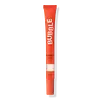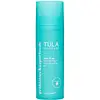What's inside
What's inside
 Key Ingredients
Key Ingredients

 Benefits
Benefits

 Concerns
Concerns

 Ingredients Side-by-side
Ingredients Side-by-side

Salicylic Acid 1.8%
MaskingWater
Skin ConditioningPentylene Glycol
Skin ConditioningSodium Polyacrylate Crosspolymer-1
EmollientGaultheria Procumbens Leaf Extract
PerfumingGlycerin
HumectantAzelaic Acid
BufferingSalix Nigra Bark Extract
Skin ProtectingAloe Barbadensis Leaf Juice
Skin ConditioningZinc PCA
HumectantDipotassium Glycyrrhizate
HumectantSambucus Nigra Fruit Juice
AstringentSpiraea Ulmaria Flower Extract
Skin ConditioningCitric Acid
BufferingSodium Hydroxide
BufferingPhenoxyethanol
PreservativeSalicylic Acid 1.8%, Water, Pentylene Glycol, Sodium Polyacrylate Crosspolymer-1, Gaultheria Procumbens Leaf Extract, Glycerin, Azelaic Acid, Salix Nigra Bark Extract, Aloe Barbadensis Leaf Juice, Zinc PCA, Dipotassium Glycyrrhizate, Sambucus Nigra Fruit Juice, Spiraea Ulmaria Flower Extract, Citric Acid, Sodium Hydroxide, Phenoxyethanol
Salicylic Acid 2%
MaskingWater
Skin ConditioningSodium Polyacrylate
AbsorbentSodium PCA
HumectantGlycerin
HumectantPolyacrylate Crosspolymer-6
Emulsion StabilisingAzelaic Acid
BufferingLactococcus Ferment Lysate
Skin ConditioningZinc PCA
HumectantEpilobium Angustifolium Flower/Leaf/Stem Extract
Skin ConditioningNiacinamide
SmoothingBisabolol
MaskingAllantoin
Skin ConditioningSodium Hyaluronate
HumectantLactic Acid
BufferingSodium Benzoate
MaskingSodium Chloride
MaskingSodium Metabisulfite
AntioxidantEthylhexylglycerin
Skin ConditioningPhenoxyethanol
PreservativeSalicylic Acid 2%, Water, Sodium Polyacrylate, Sodium PCA, Glycerin, Polyacrylate Crosspolymer-6, Azelaic Acid, Lactococcus Ferment Lysate, Zinc PCA, Epilobium Angustifolium Flower/Leaf/Stem Extract, Niacinamide, Bisabolol, Allantoin, Sodium Hyaluronate, Lactic Acid, Sodium Benzoate, Sodium Chloride, Sodium Metabisulfite, Ethylhexylglycerin, Phenoxyethanol
 Reviews
Reviews

Ingredients Explained
These ingredients are found in both products.
Ingredients higher up in an ingredient list are typically present in a larger amount.
Azelaic acid is a multitasker ingredient that helps treat acne, pigmentation, and irritation. It is a great option for sensitive skin.
What makes azelaic special?
The best thing about azelaic acid is it's gentleness. It's generally well-tolerated and safe to use alongside other actives like niacinamide or salicylic acid.
Unlike AHAs, azelaic acid will not make you photosensitive/sun sensitive.
You can find this ingredient naturally occurring in grains like wheat, rye, and barley. In cosmetics, azelaic acid is typically lab-made, which is more stable and effective.
Learn more about Azelaic AcidGlycerin is already naturally found in your skin. It helps moisturize and protect your skin.
A study from 2016 found glycerin to be more effective as a humectant than AHAs and hyaluronic acid.
As a humectant, it helps the skin stay hydrated by pulling moisture to your skin. The low molecular weight of glycerin allows it to pull moisture into the deeper layers of your skin.
Hydrated skin improves your skin barrier; Your skin barrier helps protect against irritants and bacteria.
Glycerin has also been found to have antimicrobial and antiviral properties. Due to these properties, glycerin is often used in wound and burn treatments.
In cosmetics, glycerin is usually derived from plants such as soybean or palm. However, it can also be sourced from animals, such as tallow or animal fat.
This ingredient is organic, colorless, odorless, and non-toxic.
Glycerin is the name for this ingredient in American English. British English uses Glycerol/Glycerine.
Learn more about GlycerinPhenoxyethanol is a preservative that has germicide, antimicrobial, and aromatic properties. Studies show that phenoxyethanol can prevent microbial growth. By itself, it has a scent that is similar to that of a rose.
It's often used in formulations along with Caprylyl Glycol to preserve the shelf life of products.
Salicylic Acid (also known as beta hydroxy acid or BHA) is a well-known ingredient for treating skin that struggles with acne and clogged pores. It exfoliates both the skin's surface and deep within the pores to help clear out buildup, control oil, and reduce inflammation.
Unlike AHAs (alpha hydroxy acids), salicylic acid is oil-soluble. This allows it to penetrate into pores which makes it especially effective for treating blackheads and preventing future breakouts.
Salicylic acid is also known for its soothing properties. It has a similar structure to aspirin and can calm inflamed or irritated skin, making it a good option for acne-prone skin that is also sensitive.
Concentrations of 0.5-2% are recognized by the U.S. FDA as an over-the-counter topical acne product.
It can cause irritation and/or dryness if one's skin already has a compromised moisture barrier, so it's best to focus on repairing that before introducing this ingredient into your routine.
While salicylic acid does not increase sun sensitivity, it’s still important to wear sunscreen daily to protect your skin.
If you are looking for the ingredient called BHA or Butylated Hydroxyanisole, click here.
Learn more about Salicylic AcidWater. It's the most common cosmetic ingredient of all. You'll usually see it at the top of ingredient lists, meaning that it makes up the largest part of the product.
So why is it so popular? Water most often acts as a solvent - this means that it helps dissolve other ingredients into the formulation.
You'll also recognize water as that liquid we all need to stay alive. If you see this, drink a glass of water. Stay hydrated!
Learn more about WaterZinc PCA (or "zinc salt") differs slightly from zinc itself. PCA stands for pyrrolidone carboxylic acid. However, Zinc PCA comes from zinc.
It can help reduce redness, regulate sebum, and promote the general healing process of the skin.
Zinc PCA tends to be especially useful for those with oily, acne-prone skin. It's certainly an ingredient worth trying out!
Learn more about Zinc PCA